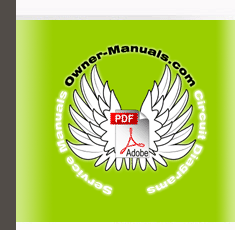|
|
|
Categories
|
|
Information
|
|
Featured Product
|
|
|
 |
|
|
There are currently no product reviews.
 ;
Quick service response. A useful and very rare service manual with all details. I recomend this service.
 ;
I ordered this manual sometime in the afternoon and I received it on my e-mail the same evening.
This is a fantastically good and properly scanned copy of the original manual. All pages are of the same scale and they overlap each other. It means that you can print the manual and easily make it as a convenient paper manual.
The content of the manual is fantastic. Alignment descriptions, PCB layouts and elementary diagrams are explicit and precise. I immediately found what I was looking for. Thanks to this manual and Owner-Manuals.com my amplifier is alive again. Many thanx indded!
 ;
The manual was well-scanned and easy to read. As an added bonus, the Operator's Manual was bundled with the Service Manual!
I'd definitely use owner-manuals.com again.
 ;
Finally, i found one website, where i can download this service manual , and fix my hifi. The service manual is very good, and easy to download and to print.
 ;
Complete and very useful. Could have benefited from a little higher resolution on the schematic and layout diagrams for improved legibility.
5. Transfer of Electric Charge by the Horizontal CCD The transfer system for the horizontal CCD emplays a 2-phase drive method.
VAA11701-R.3571.A
The electric charges sent to the final stage of the horizontal CCD are transferred to the floating diffusion, as shown in Fig. 1-6. RG is turned on by the timing in (1), and the floating diffusion is charged to the potential of PD. The RG is turned off by the timing in (2). In this condition, the floating diffusion is floated at high impedance. The H1 potential becomes shallow by the timing in (3), and the electric charge now moves to the floating diffusion. Here, the electric charges are converted into voltages at the rate of V = Q/C by the equivalent capacitance C of the floating diffusion. RG is then turned on again by the timing in (1) when the H1 potential becomes deep. Thus, the potential of the floating diffusion changes in proportion to the quantity of transferred electric charge, and becomes CCD output after being received by the source follower. The equivalent circuit for the output circuit is shown in Fig. 1-7.
���
�� �� �� �� �� ��� �� ������� �� ������������������ �� �� �� ������� �� �� ����� �� ���� �� ���� �� ��� ��� ���
���
��
��
��
��
�� ���
���
��
��
��
��
�� ���
�� ������� �������
�������������������� �������������� �����������
Fig. 1-6. Horizontal Transfer of CCD Imager and Extraction of Signal Voltage
����������������
������������������������������
6. Lens drive block 6-1. Shutter drive The lens driver IC (LB8649FN) is used to drive by the two shutter drive signals (SIN1, SIN2) which are output from the ASIC expansion port (IC106), and the shutter is opened and closed. 6-2. Focus drive The focus stepping motor drive signals (FIN1, FIN2, FIN3
���������������������
���������� �������������� ��������� ������
and FIN4) which are output from the ASIC expansion port (IC106) are used to drive by the lens driver IC (LB8649FN). Detection of the standard motoring positions is carried out by means of the photointerruptor (FPI) inside
��������������������������� ���������������������������� ������������ ������������
the lens unit. 6-3. Zoom drive The zoom stepping motor drive signals (ZIN1, ZIN2, ZIN3 and ZIN4) which are output from ASIC (IC102) are used to drive by the lens driver IC (LB8649FN). Detection of the standard zoom positions is carried out by means of photoreflector (ZPI) inside the lens unit. 6-4. Iris drive The iris motor drive signals (IIN1 and IIN2) which are output from the ASIC (IC102) are used to drive the lens driver IC (LB8649FN).
Fig. 1-7. Theory of Signal Extraction Operation
- E3 ï½¥ E2500 -
|
|
 |
> |
|
